In the Traditional Rite, only two Sacraments are conferred during the Mass: the Holy Eucharist and Holy Orders. The remaining five Sacraments are conferred outside of the Mass.
*Liturgy Note: For those curious, wedding vows are exchanged in a ceremony immediately preceding the Nuptial Mass, meaning that the first thing the couple does as husband and wife is assist at the Mass.
This maintains a clear distinction between the correct priesthood held by every baptized soul and the ministerial Priesthood perfected in men ordained to serve as alter Christus (another Christ). Additionally, the ceremonies that correspond to each Sacrament are their own independent liturgies, and keeping them separate from the Mass gives both the Sacraments and the Mass the dignity they deserve as their own rites.
The Mass often follows Confirmation, but not always. The 2024 Confirmations at the Oratory were not followed by a Mass, but the church was still filled to standing room only by the Confirmandi, their families, and other members of the parish there to witness the Sacrament and thank His Excellency, Bishop James V. Johnston, for being with us.
THE RITE OF CONFIRMATION
The Form: The words spoken by the Bishop at the moment of Confirmation.
The Matter: The laying on of hands and anointing with chrism.
The Matter: The laying on of hands and anointing with chrism.
Both of these must be correct for the Sacrament to be valid.
Sacred Chrism, made of a mixture of olive oil and balsam, represents the strength bestowed on the soul by the Holy Ghost. Chrism is blessed by the Bishop during Holy Week, usually on Spy Wednesday or Holy Thursday. Only a Bishop can make chrism; parish priests do not have the faculty to do this.
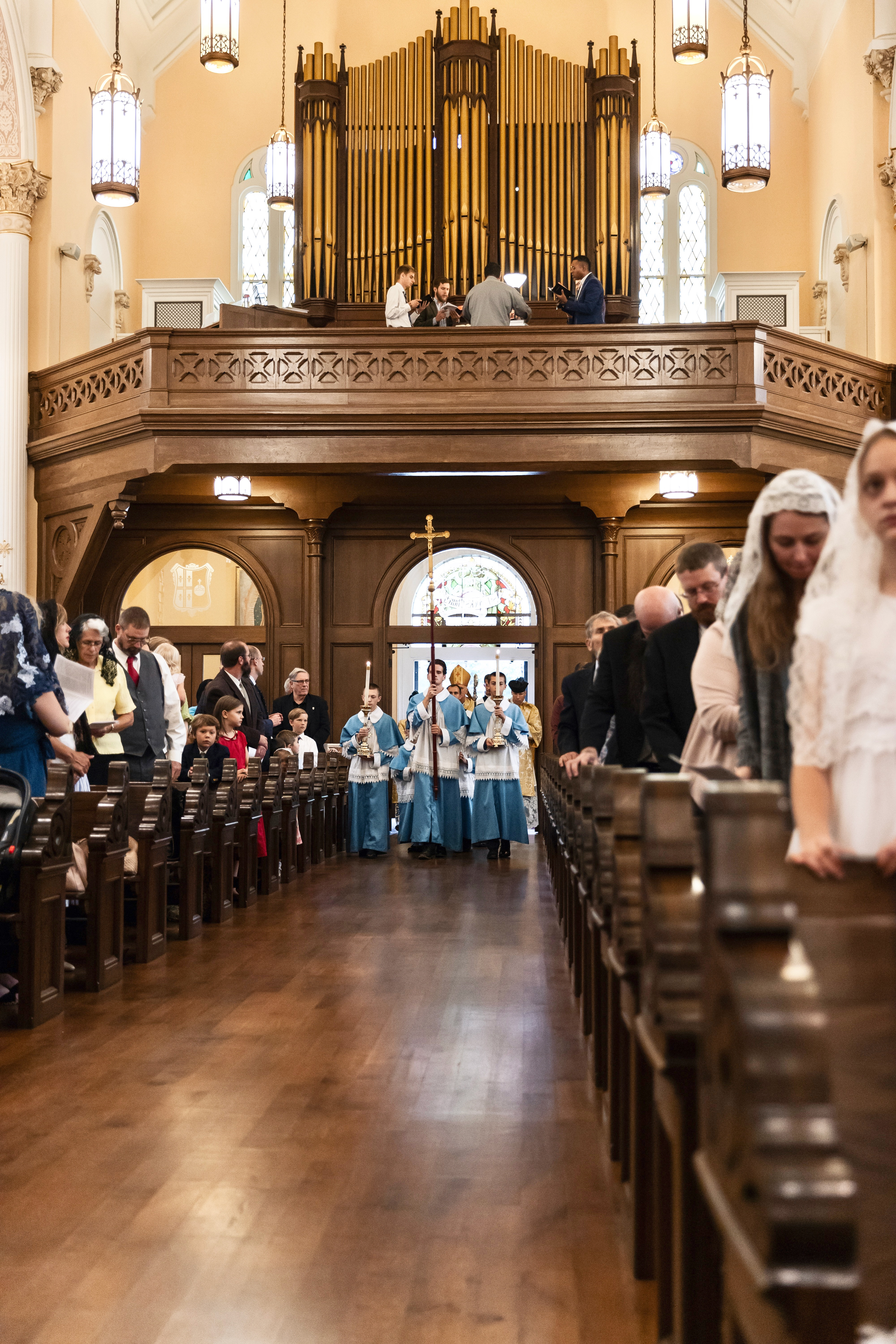
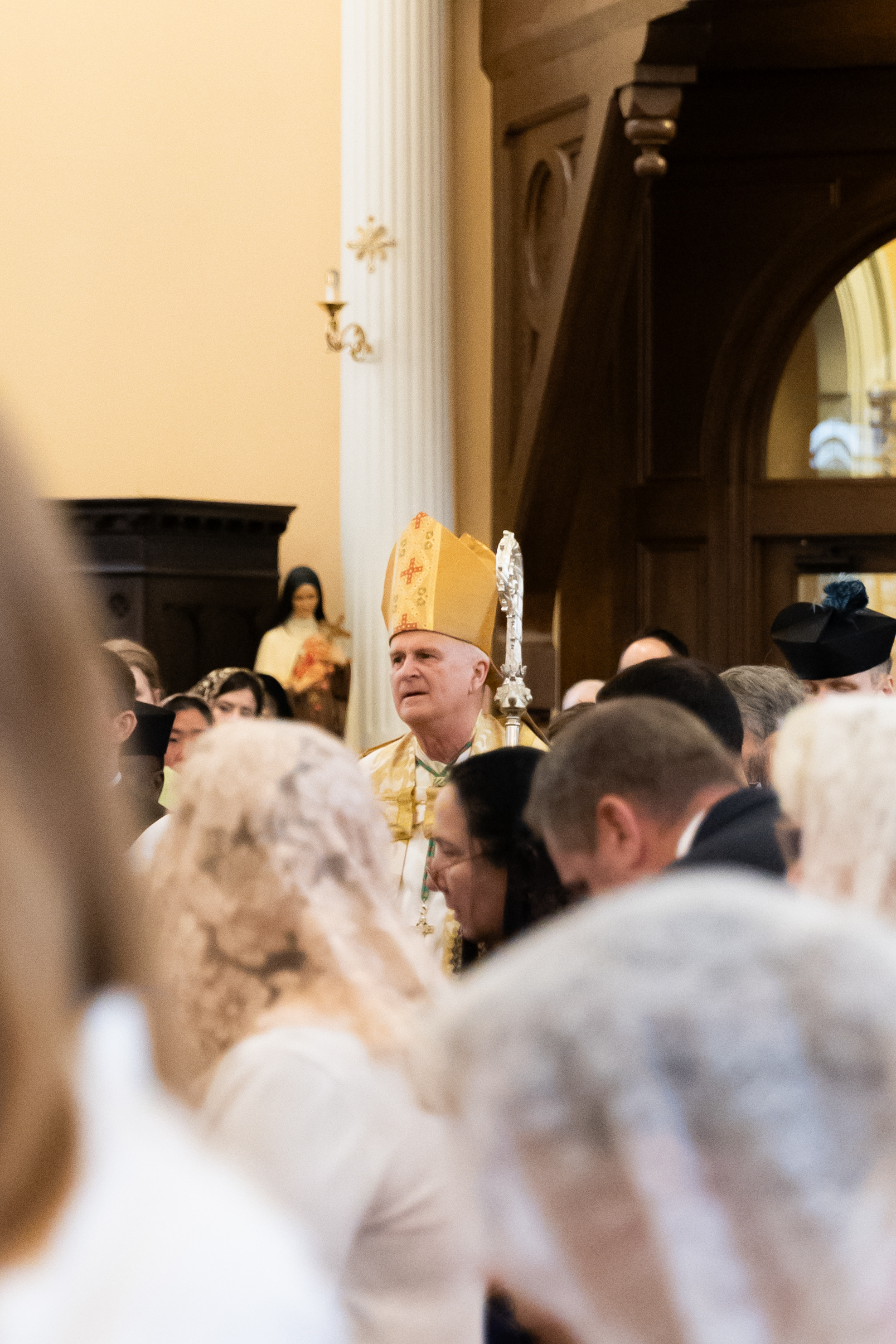
The Bishop enters as the choir sings a chant or a hymn. He is vested in pastoral stole, cope, and mitre, and carries his crozier. It is customary to genuflect on the left knee as the bishop passes.
When the procession reaches the sanctuary, all kneel for the first verse of Veni Creator Spiritus.
*Liturgy Note: The ordinary minister of the Sacrament of Confirmation is a Bishop, but depending on the circumstances, such as at the Easter Vigil, the pastor of the parish may do it. The Rite of Confirmation done by the pastor may be found here.
Veni, Creator Spiritus
Mentes tuorum visita
Imple superna gratia
Quae tu craesti pectora.
Mentes tuorum visita
Imple superna gratia
Quae tu craesti pectora.
Come, Holy Ghost, Creator blest
And in our hearts take up Thy rest
Come with Thy grace and heavenly aid
To fill the hearts which Thou hast made.
And in our hearts take up Thy rest
Come with Thy grace and heavenly aid
To fill the hearts which Thou hast made.


Servers bring the faldstool to the center of the sanctuary.
After the first verse, all stand for the remainder of the hymn. A Collect is sung.
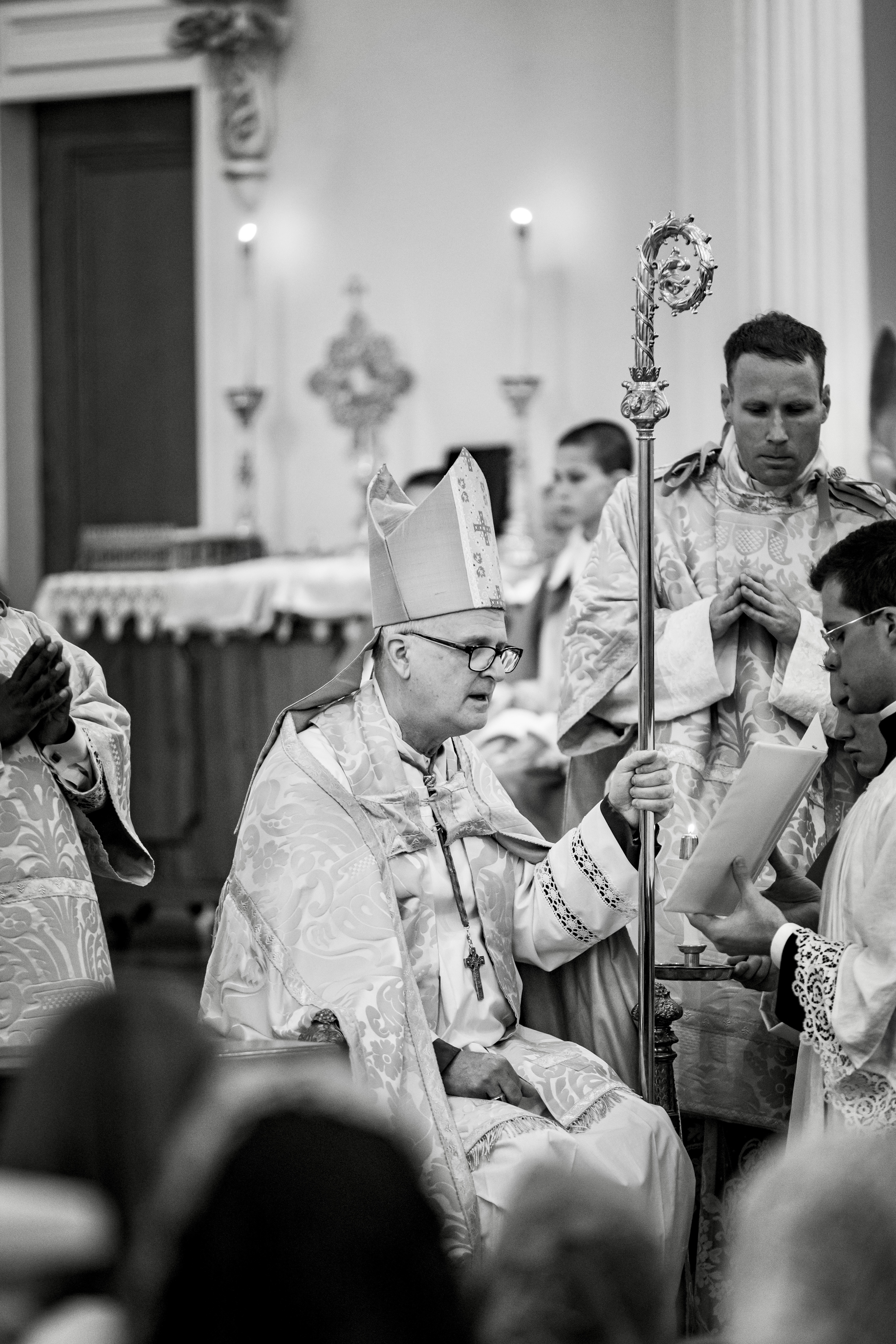
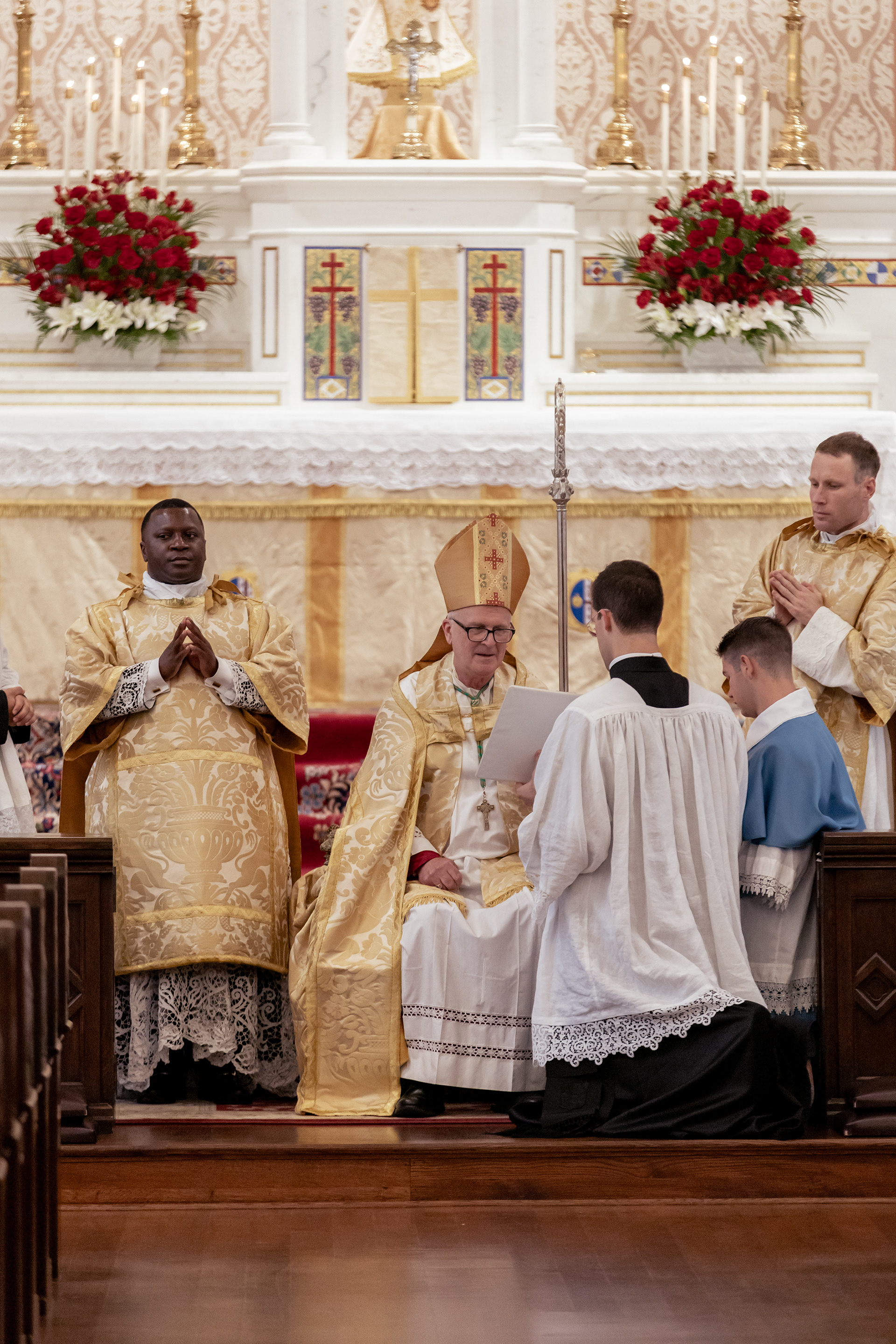
The Bishop is seated on the faldstool and gives a brief sermon. The faldstool is used when a bishop is not occupying the throne or is presiding in a church other than his own.
The Bishop is accompanied by several attendants: a deacon and subdeacon, a Master of Ceremonies, and servers to carry his crozier, mitre, and any books he may need (e.g. sermon folder or Roman Ritual). Another server holds the bugia, the seventh candle that is lit when the bishop is present at a liturgy.
The full texts of the Rite of Confirmation may be found here.
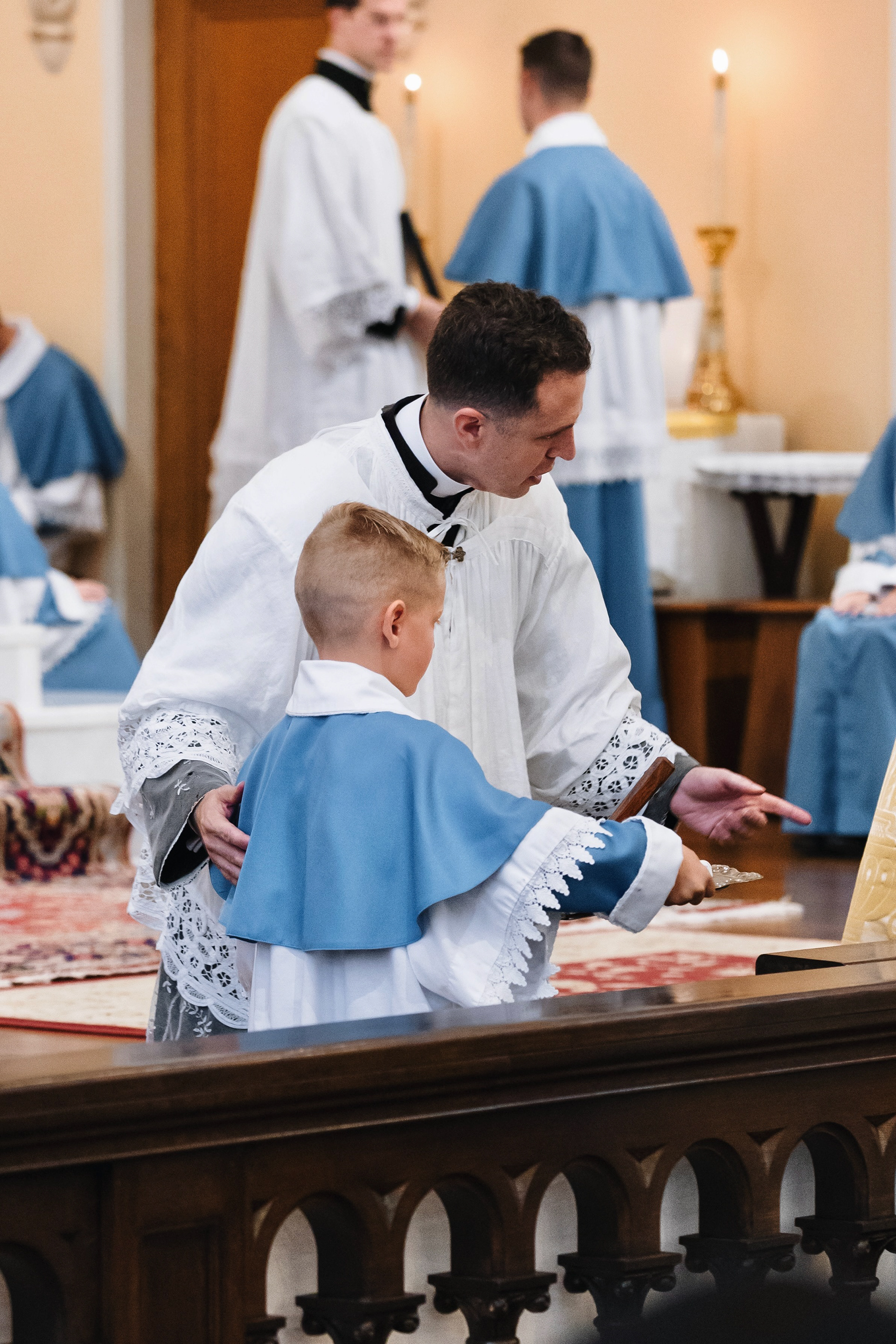
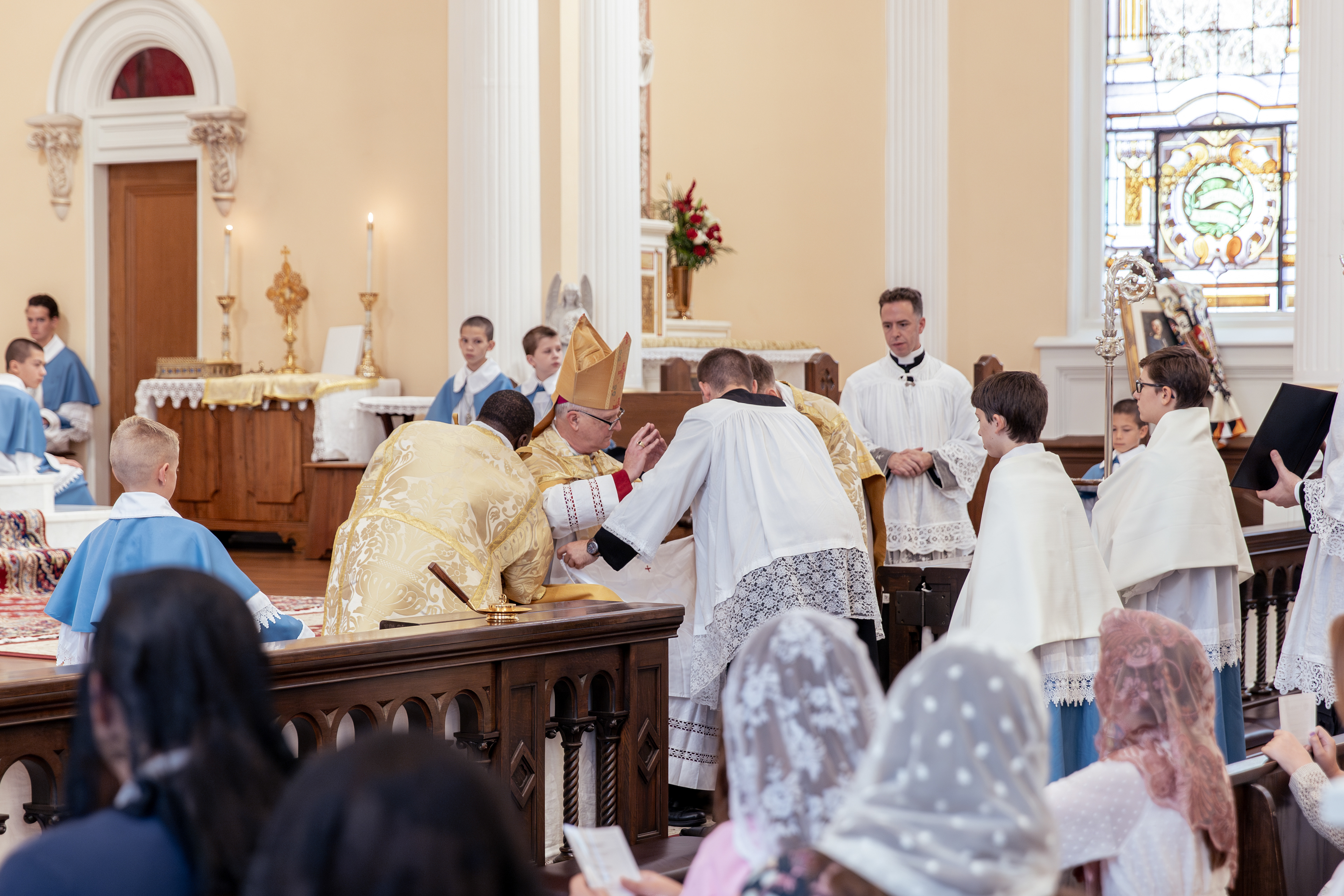
A tray containing cotton to wipe away excess chrism is brought to the Communion rail. The Bishop's attendants tie a gremiale over his lap. It is one of the rare liturgical items that has no blessing or symbolic meaning; its use is purely practical, functioning as an apron and keeping any chrism from falling on the Bishop's garments while he anoints the Confirmandi.
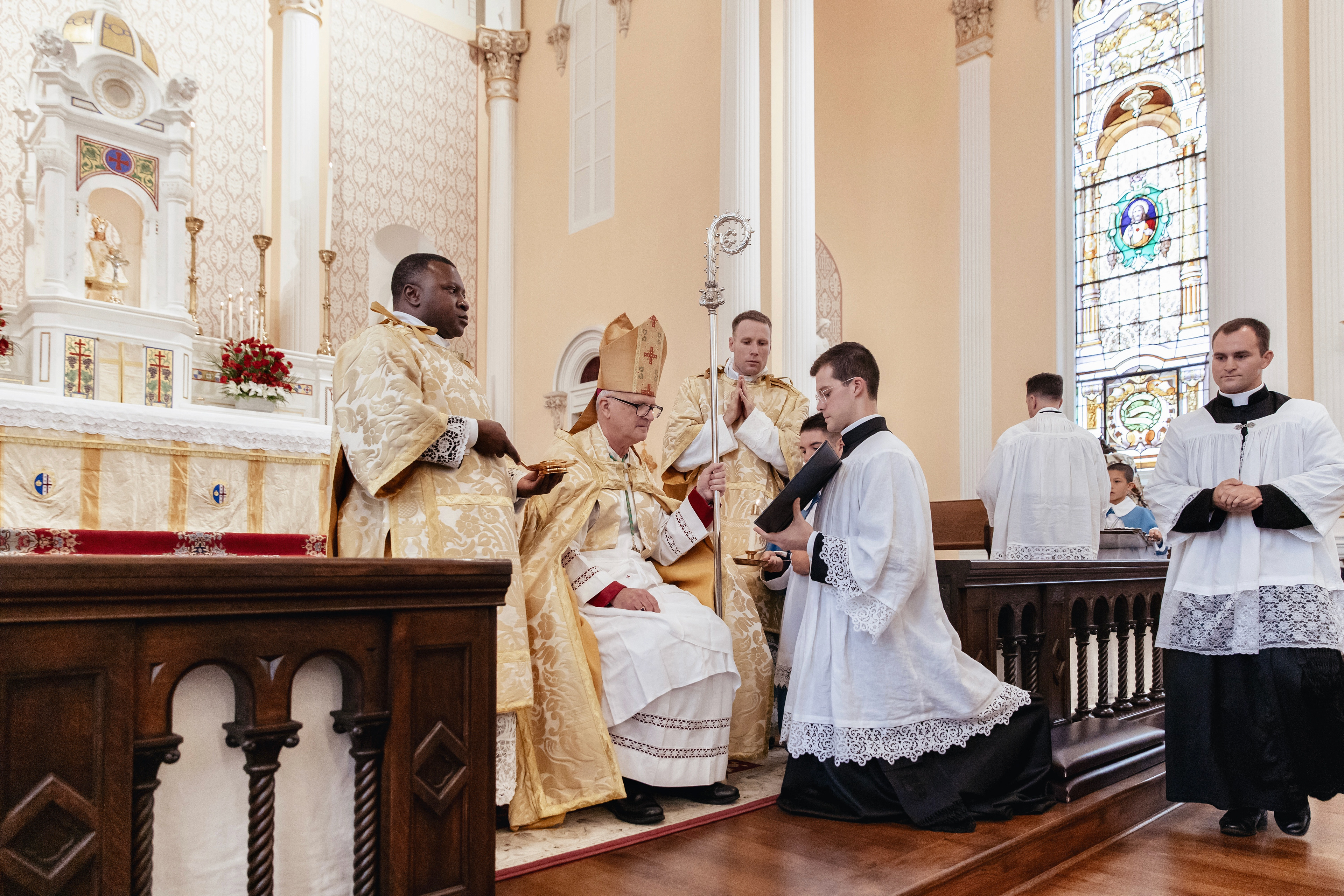
The Confirmandi kneel and all others stand while the Bishop prays that "the Holy Ghost descend upon you and the might of the Most High protect you from sin."
He continues to pray that God grant the Confirmandi the Gifts of the Holy Ghost: wisdom, understanding, counsel, fortitude, knowledge, piety, and fear of the Lord.
One at a time, the Confirmandi come forward with their sponsors behind them. The young men are confirmed first. This was explained at the rehearsal as "contrary to societal norms where ladies always go first, but speaks to the dignity of the woman in the hierarchy of creation. The priest, holding the most dignified office, is the last minister to enter in a procession. Things are presented in order of their dignity. "
The Confirmand kneels before the Bishop, holding a card with his or her Confirmation name on it.

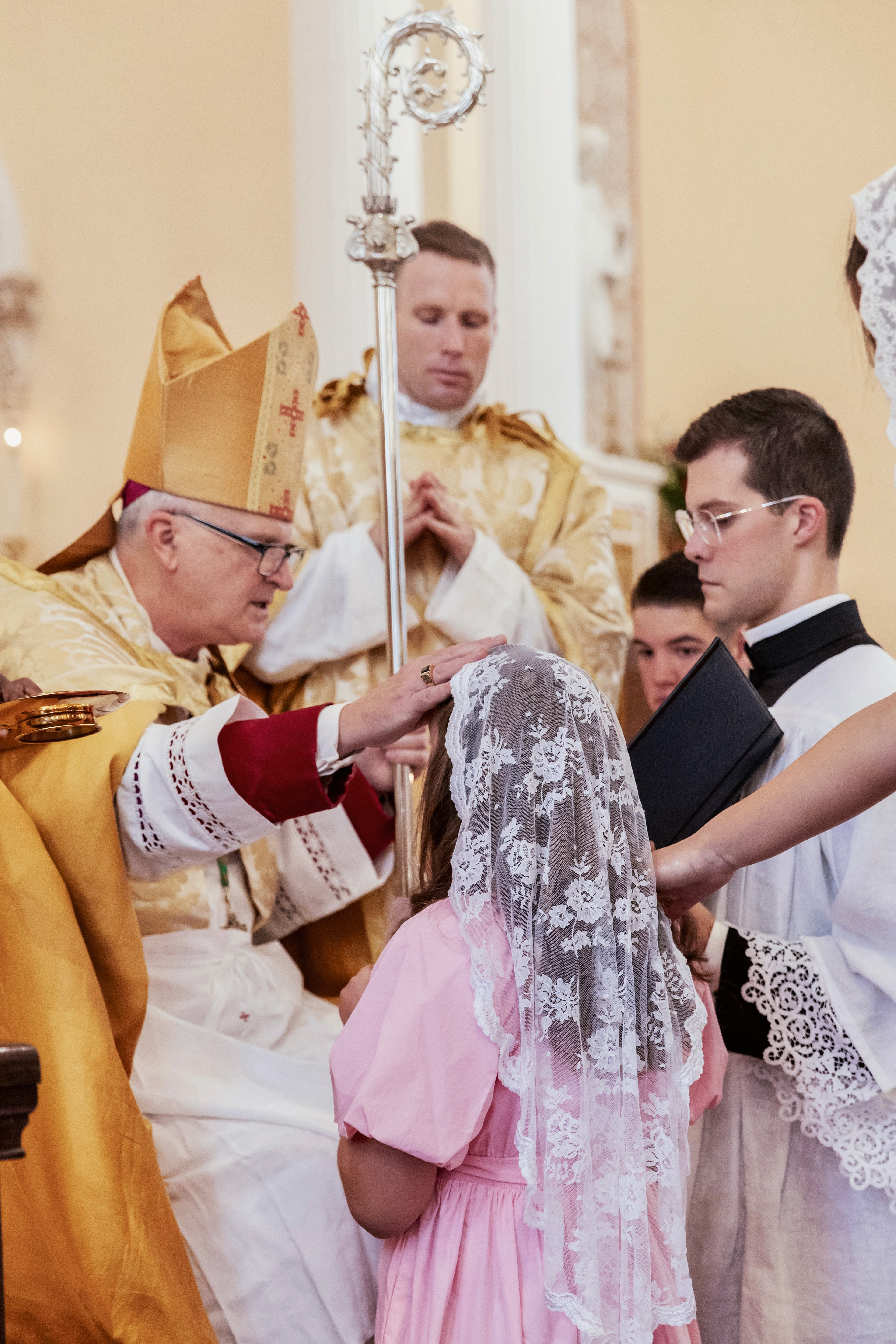
The Bishop dips his thumb in the chrism and anoints the forehead of each Confirmand.
"[Maríam], signo te signo Crucis et confirmo te Chrismate salutis..."
([Mary], I sign you with the Sign of the Cross and confirm you with the chrism of salvation...)
([Mary], I sign you with the Sign of the Cross and confirm you with the chrism of salvation...)
The anointing of the forehead - rather than a different part of the body - has a threefold meaning.
1.) In the Sacrament of Confirmation, we are given wisdom and knowledge of the Faith through the Holy Ghost.
2.) At least part of the forehead is always visible, no matter how modestly we may dress. Likewise, our Faith should be visible to everyone we meet, no matter the circumstance.
3.) Our faces blush when we are ashamed; signing the forehead symbolizes that we must never be ashamed of the Faith.

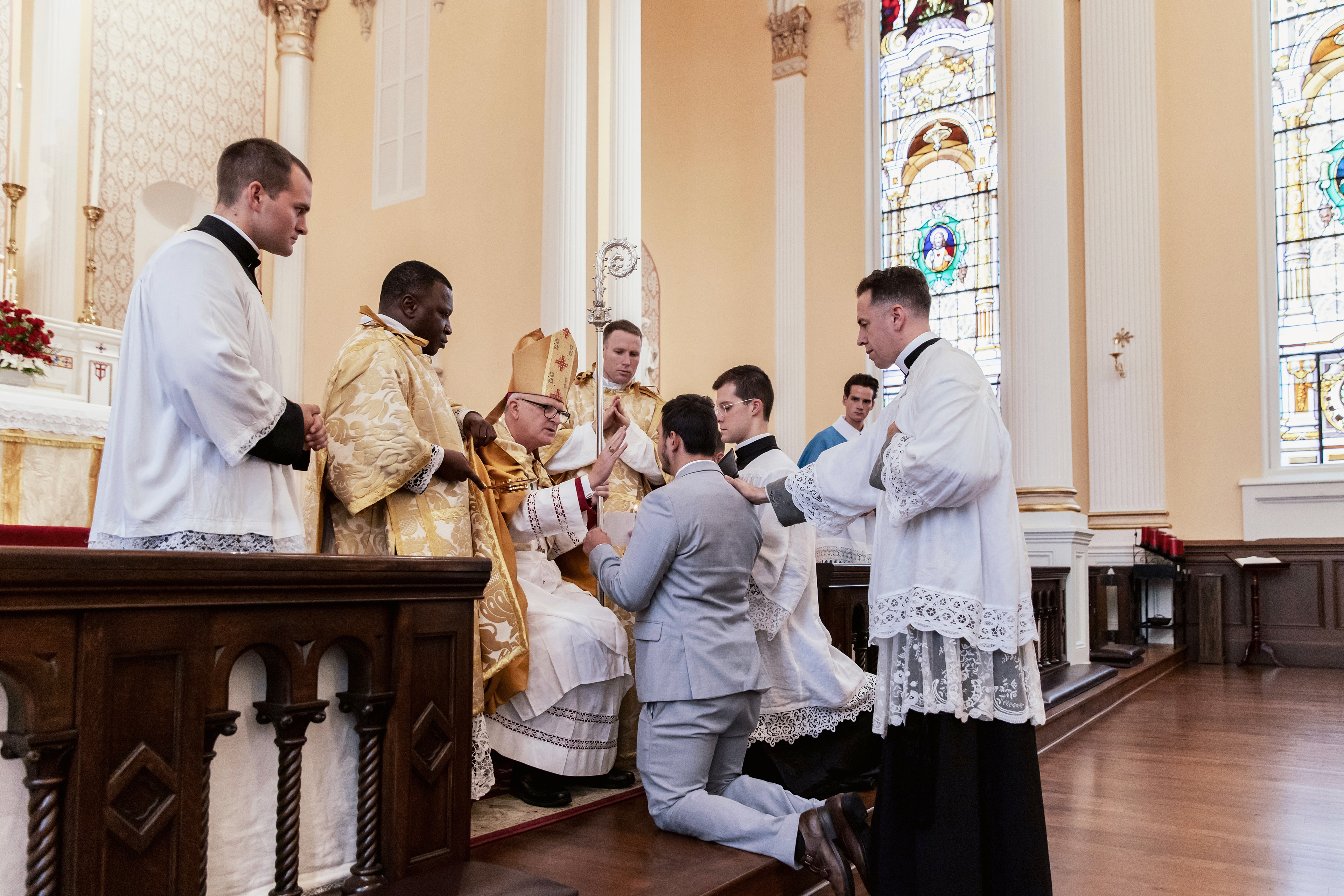
The Bishop makes the Sign of the Cross over the Confirmand three times as he continues:
"...in nomine Patris, et Filii, et Spiritus Sancti."
(...in the Name of the Father, and of the Son, and of the Holy Ghost.)
(...in the Name of the Father, and of the Son, and of the Holy Ghost.)
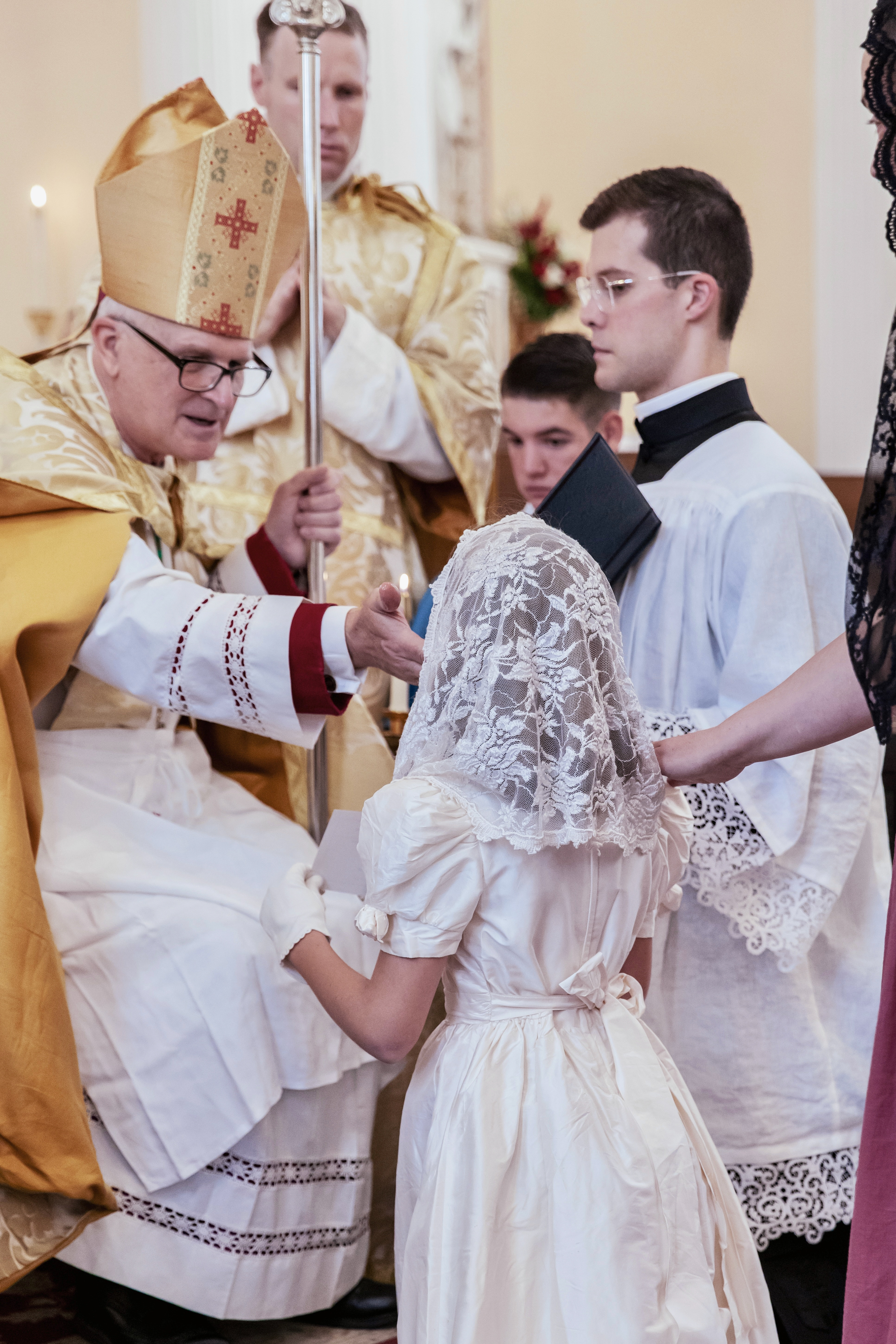
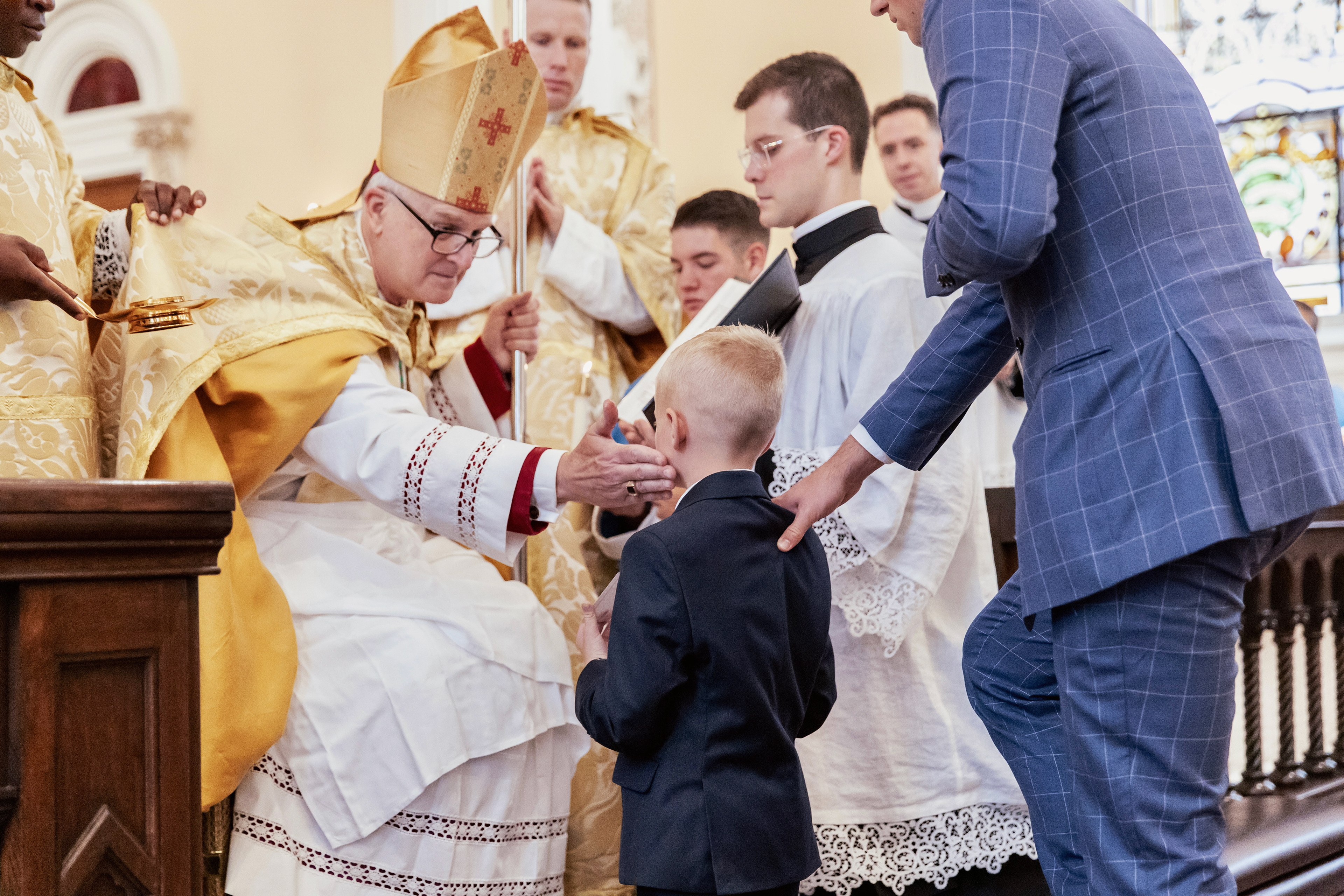
He then gently strikes the Confirmand on the cheek, saying:
"Pax tecum."
(Peace be with you.)
(Peace be with you.)
The Confirmand gives no response to this greeting.
After all have been confirmed, the choir sings,
"Confírma hoc Deus, quod operátus es in nobis: a templo tuo, quod est in Jerúsalem."
(Confirm, O Lord, what Thou hast wrought in us, from Thy holy temple, which is in Jerusalem.)
(Confirm, O Lord, what Thou hast wrought in us, from Thy holy temple, which is in Jerusalem.)
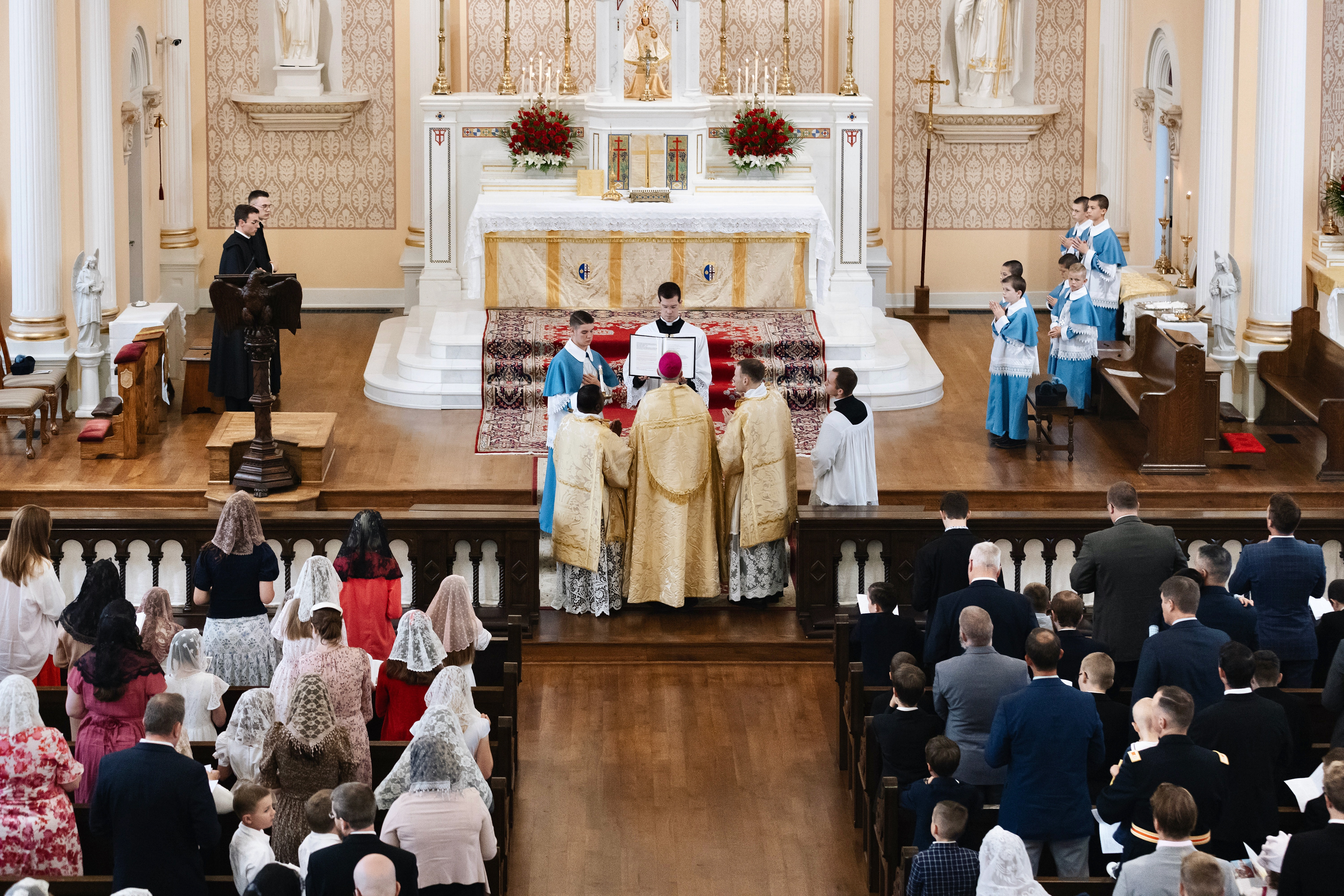
Turning toward the altar, the Bishop prays a Collect:
"O God, Who didst give to Thine Apostles the Holy Ghost...may the hearts of those whose foreheads we have anointed...and signed with the seal of the Holy Cross...by the same Holy Ghost...be made the temple of His glory."
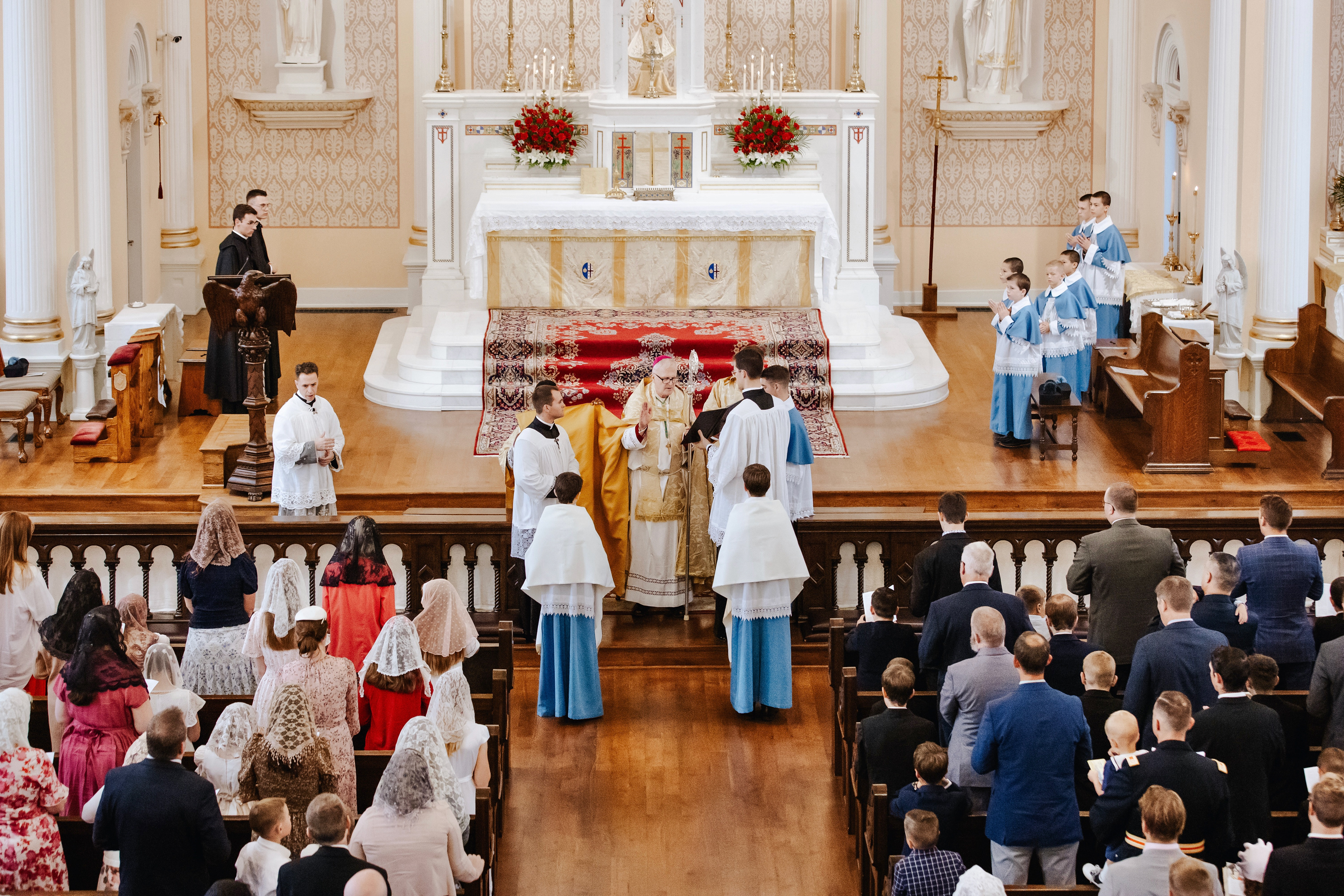
Turning toward the Confirmandi, he makes the Sign of the Cross over them and blesses them:
"May the Lord bless you out of Zion, that you may see the good things of Jerusalem all the days of your life, and may have life everlasting. Amen."
The blessing is only for the Confirmandi; any others in attendance do not cross themselves.

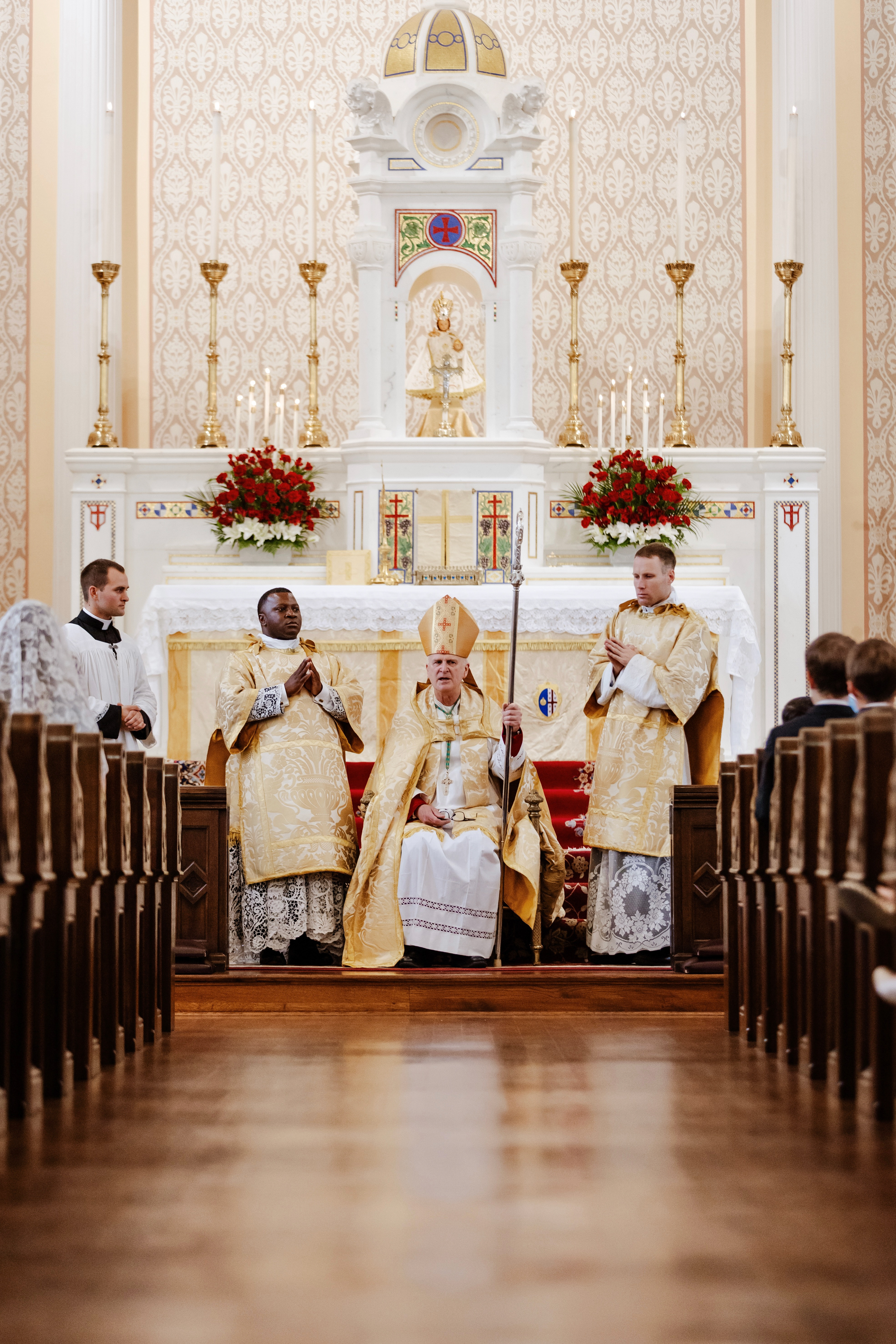
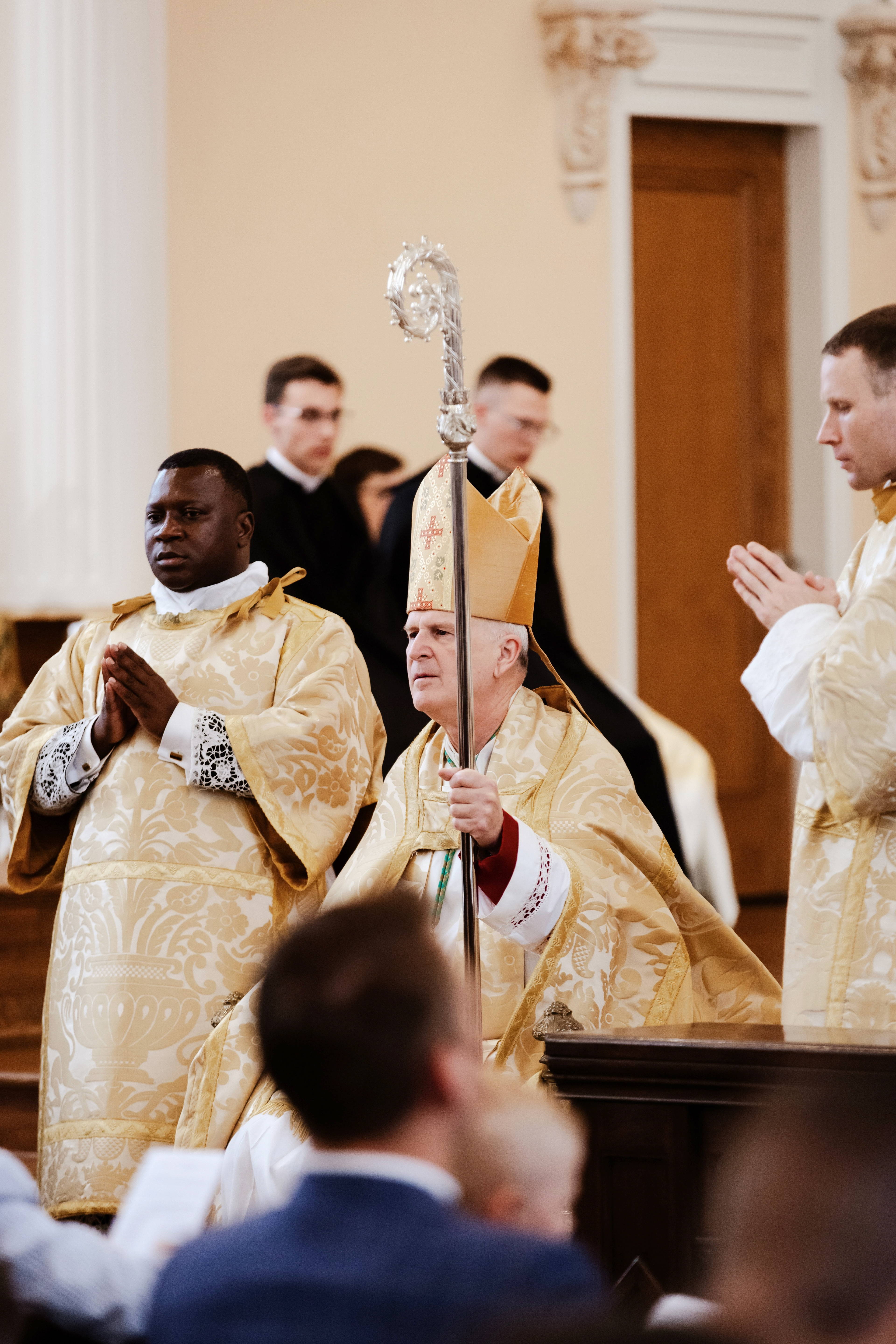
The Bishop is seated and may give a brief address to the Confirmandi. Then they recite the Apostles' Creed, the Our Father, and the Hail Mary.
This may be followed by the Sacrifice of the Mass, Benediction or another devotion, or the procession out of the church. Again, it is customary to genuflect on the left knee and cross oneself as the Bishop passes by and imparts his blessing.

